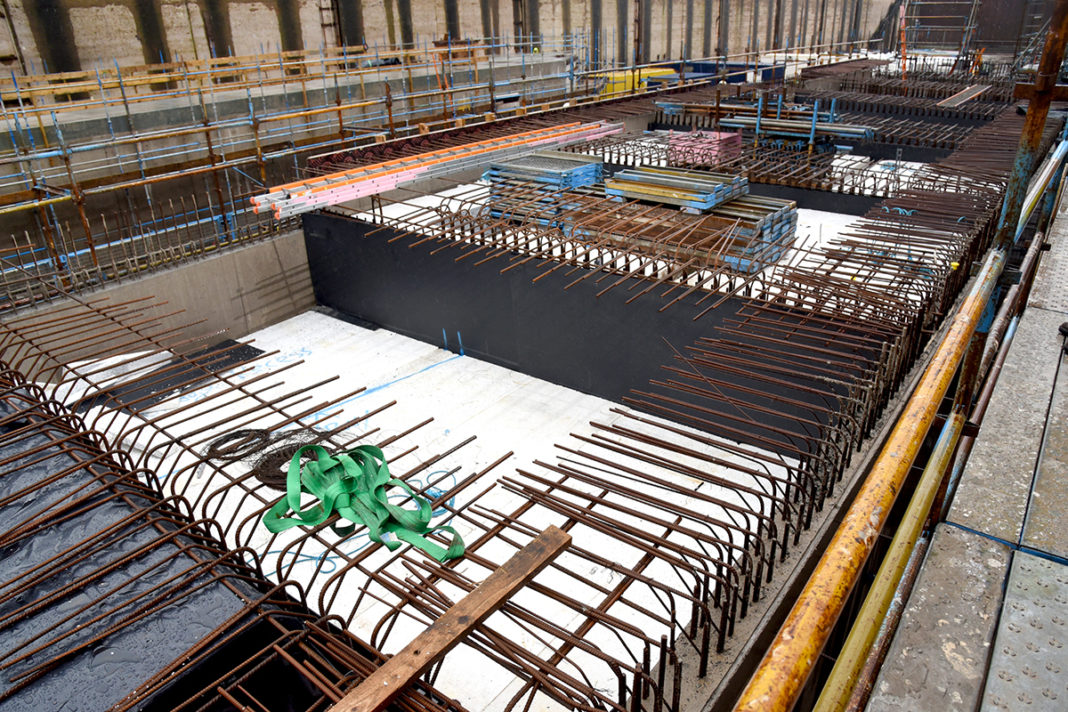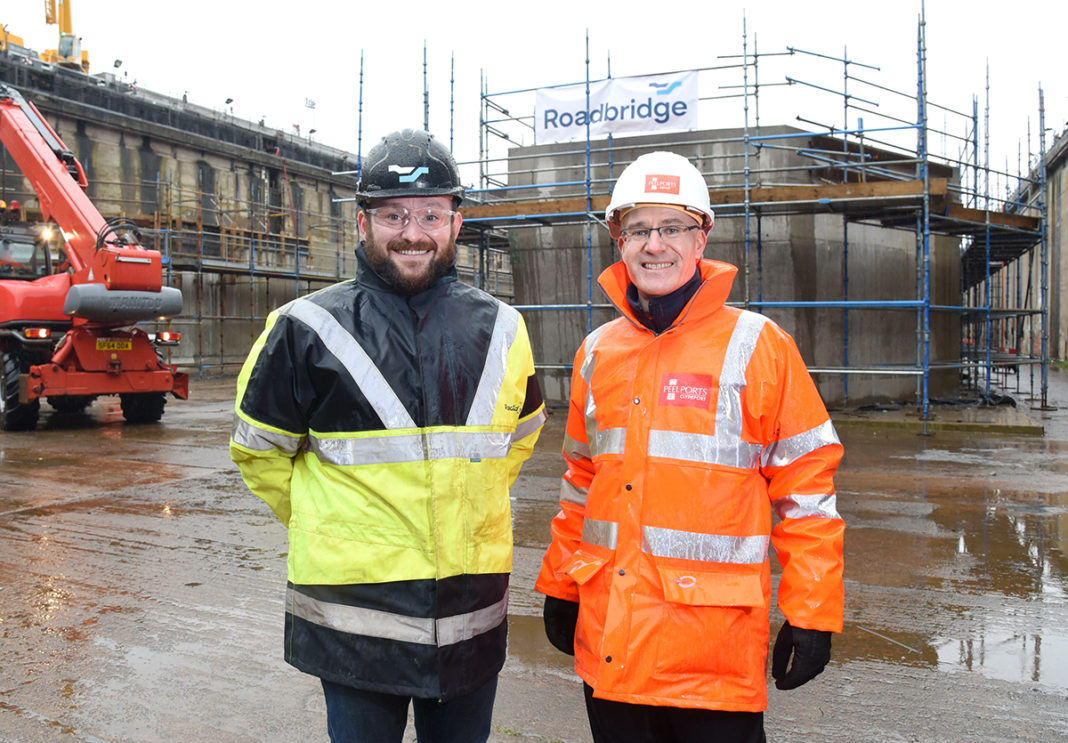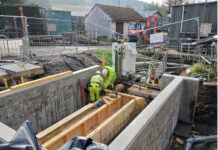
THERE’S a wave of activity at Peel Ports’ Inchgreen Dry Dock in Inverclyde, as the firm’s new 200-metre long cruise pontoon berth begins to take shape.
The cruise berth is part of a £19 million development in Greenock, which also includes a visitor centre and cruise terminal. The aim is to grow the town’s cruise industry to over 150,000 passengers per year and deliver a significant boost to the local economy.
The project will compliment both the container and cruise side of operator Peel Ports’ business in Greenock, with the firm anticipating a record 80+ ships to visit the ocean terminal in 2020.
“It’s a very challenging and complicated engineering project, not just in the building of the pontoons, but ensuring they are fit for purpose and in accordance with our customer’s requirements. The build is going fantastically well and couldn’t be done without the dry dock and support of Peel Ports,” explained Terrence Mallon, project manager at civil engineering specialist Roadbridge, the firm carrying out the build of the pontoon and associated works.

Terence accredits much of the steady progress of the project to the infrastructure and geography of the Peel Ports facility. He added, “You’ve got the airport 25 minutes away and the maritime links open to the project, as well as the excellent road infrastructure. So as a contractor, we’ve never had an issue getting materials to the site – if it’s too big for a road, it’ll come by sea; if it needs to be here in a hurry, we can bring it in by air and transport it down here.”
The pontoon will be situated at Greenock’s Ocean Terminal once complete. It will be towed out to its location by Roadbridge , before being attached to marine monopiles which have already been driven into the seabed.
In total, 35 jobs have been created as a result of the pontoon project, all of which went to operatives either from the local area or nearby Glasgow.
Being local to the area, the new recruits were well aware of the tendency for adverse weather conditions.
“The weather, particularly throughout February, has been incredibly challenging,” Terence said. “The dry dock in itself has helped by providing shelter, allowing works to continue when they might otherwise not have.”
The weather not only poses an influence in the carrying out of the build process, but in the design of the pontoon itself.
Climate change has been a big consideration, with the prospect of increased rainfall and more aggressive seas over the next 25 to 50 years being accounted for.

Terence added, “The scale of the pontoons, and the fabrication process in itself is an innovation. The design focused heavily on providing a single circumference pour of the pontoons to avoid construction joints in areas subject to wave loading.
“This resulted in a need to pour 122 linear metres of concrete on the external walls, all whilst ensuring that no cracking occurred. A concrete mix design, coupled with sequencing of the base slab pours allowed these works to proceed. The results have been beyond expectations with no shrinkage or thermal cracking occurring.”
Once completed, the pontoons will be towed to the berth area and then mounted onto the installed marine monopiles that are filled with polystyrene for buoyance.
The tow should be straightforward as considerable planning has gone into the mounting stage to ensure no issues.
Craig Donald, senior surveyor at Peel Ports said: “The new cruise berth gives us the opportunity to grow both sides of the business: the container side and the cruise business. It’s challenging to operate them concurrently on the same berth, but to have the two facilities allows us to now grow both.”
The project has benefited from over £9.6 million of funding being approved from the Glasgow City Region City Deal to overall Greenock development from its £1 billion pot. The balance of the marine and landside works is being met by Peel Ports (£8 million) and the George Wyllie Foundation from arts funder the Dunard Trust (£1.5 million).











